
Hurricane
September
4, 1948
The view east
along the Lake Pontchartrain shoreline, near Pumping Station No. 1 in Jefferson Parish at 4:25 p.m., September 4, 1948.
Ten hours after the hurricane's full force struck the shore, waves were still breaking across the battered roadway.
(NOPL)
While hurricanes were still un-named a storm of hurricane intesity
ripped through Louisiana's coast and New Orleans on September 3 and 4, 1948. Originally expected to make land fall near Morgan
City, the storm unexpectedly changed course, brushed by Grand Isle, and hit New Orleans around 6:30 a.m. on September 4,
with sustained winds of 78 m.p.h. and gusts as high as 90 m.p.h. at Moisant. The pressure at Moisant dropped to 29.20
and at the Huey Long Bridge fell to 29.21".
As winds increased,
city officials in New Orleans ordered some 1500 people to evacuate from Camp Leroy Johnson on the lakefront (1300 troops,
100 dependants, 35 patients, and 45 prisoners). Jackson Barracks shelterd 400. 1200 people were evacuated to the Municipal
Auditorium. Some 100 people were evacuated from Bridgedale. By 2 P.M. 500 were evacuated from a 170 block area
between the London Avenue Canal and Peoples Avenue near the lakefront. Franklin Avenue flooded as did the surrounding
area. St. Bernard residents were taken to shelters in New Orleans. Some were housed in the East End School (Bucktown)
and at Metairie High School on Metairie Road near Bonnable Boulevard. Sections of East End and Bucktown
flooded -- the East End School playground was three feet under water at the storm's surge. Fifty were rescued from Buctown
after daylight when 6 to 7 feet of water ripped homes apart.. Waves crashed over the West End Seawall, over Hammond
Highway, and over the banks of the 17th Street Canal. The Lake Pontchartrain bridge at highway 11 to Slidell
was underwater.
The maximum tide reached 4.7 feet in New Orleans, and winds caused damage to
small boats, trees, and power and communication lines. At Grand Isle, the heaviest damage occurred to oil rigs and drilling
equipment from high tides. Total damage in the United States reached $900,000, but no loss of life was reported. Heavy
damage was done to oil rigs and other equipment offshore Grand Isle. Crops suffered wind and rain damage. Storm
surges of 5 feet occurred at Ostrica Lock and 4-5 feet along the Chandeleurs. Damage estimates were near $888 thousand.
All survived the storm. Storms in the United States were not assigned names until 1953.
High tides and heavy rainfall
caused flooding in low areas, and more than 2000 citizens were forced to leave their homes.
The U.S. Army Corps of Engineers photographed the aftermath of both a September 1947 and the 1948 hurricanes,
which
can be viewed here. (NOAA & NOPL)


The post-Katrina evacuation of the Superdome was completed on Sunday, September 4, 2005.
The same day, 29,588 Army National Guard and 4,596 Air National Guard were deployed (34,184 total).
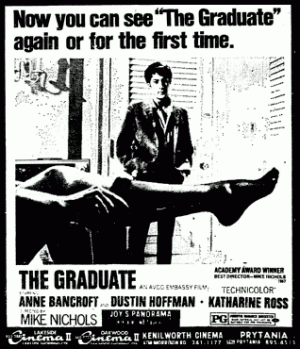 September 4, 1972 -- Times-Picayune
September 4, 1972 -- Times-Picayune
The ground level entry ramp to I-10 between Jefferson Davis Parkway and Broad Street was nearly completed
on September 4, 1972. It would link thr Pontchartrain Expressway to the I-10 at Broad. Numerous
other streets, including Poydras, were also linked by ramps to the Interstate highway including the Claiborne overpass.
In asscociation with Germaine Monteil, D.H. Holmes department stores paid tribute to "an unheralded
labor force in our community represented by 10 'Beautiful Activists' on September 4, 1972. They included:
Mrs L. Sidney Charbonett Jr. -- Hotel Dieu Ladies Auxilliary, Mrs. Francois V. de la Barre -- Volunteers of America
Women's Axiliary. Mrs. Joseph Epstein Sr. -- New Orleans Speech and Hearing Center, Mrs. Ashton J. Fischer -- Christian Women's
Exchange, Mrs Paul Godchaux Jr. -- New Orleans Philharmonic Symphony Society, Mrs. Fred S. Landis -- League of Women Voters
in New Orleans, Mrs. R. King Milling -- Young Women's Christian Association, Mrs. J. Frederick Miller Jr. -- New Orleans Museum
of Art, Mrs. William C. Terral -- Beautiful Activist at Large, Mrs. Fritz H. Windhorst -- St. Michael's Guild.
The unfinished Tall Timbers apartement development, under construction in Algiers, suffered serious damage
to its second floor during a fire on September 4, 1972.
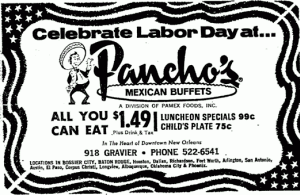 September 4, 1972 -- Times-Picayune
September 4, 1972 -- Times-Picayune
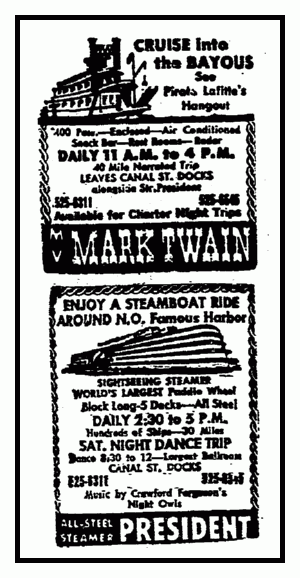 September 2, 1972 -- Times-Picayune
September 2, 1972 -- Times-Picayune
 September 4, 1972 -- Times-Picayune
September 4, 1972 -- Times-Picayune
 September 4, 1972 -- Times-Picayune
September 4, 1972 -- Times-Picayune
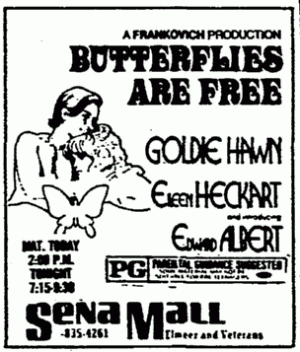 September 4, 1972 -- Times-Picayune
September 4, 1972 -- Times-Picayune
Southern University at New Orleans was founded as a branch unit of Southern University and Agricultural & Mechanical
College (Southern University) in Baton Rouge by Act 28 of the Extraordinary Session of the Louisiana Legislature of September
4, 1956. On September 21, 1959 SUNO opened its doors on a 17-acre site located in historic Pontchartrain
Park, a subdivision of primarily African American single-family residences in eastern New Orleans. Established
as an open community of learners, classes began with 158 freshmen, one building and a faculty of fifteen. The University
offered ten courses in four academic disciplines, including Humanities, Science, Social Science and Commerce. The first
graduation took place in May 1963 when baccalaureate degrees were awarded to 15 graduates. (Southern University of New Orleans)
FENNER, Charles Erasmus II, attorney, broker, humanitarian. Born, Guatemala City, Guatemala,
September 4, 1876; son of the American consul Darwin Ponton Fenner and Amanda Logan. Removed to New Orleans at
age 12 after death of father. Education: Tulane University, graduated 1896; University of Virginia, law degree, 1898.
Married Virginia Schriever of New Orleans. Children: Virginia (b. 1905), Darwin Schriever (q.v.), and Laura (b. 1912).
Career: practiced law in New Orleans, 1898-1901; became a brokerage clerk; was partner in brokerage firm of Fenner and
Solari, 1905-1915; co-founded firm of Fenner and Beane which became a member of the New York Stock Exchange in 1922; firm
became Merrill Lynch, Pierce, Fenner and Beane in 1941; by 1963 Merrill Lynch, Pierce, Fenner and Smith was the nation's
largest brokerage firm; was vice president and a voting stockholder of the firm; president, New Orleans Cotton Exchange,
1935-1937; founding member of International House; president of Audubon Park Commission; vice president and president of
Southern Eye Bank, third eye bank set up in the nation; president, Eye, Ear, Nose, and Throat Hospital in New Orleans; devoted
half his time to that hospital during World War II; helped promote its post-war expansion; named by the American Hospital
Association in 1948 as one of the fifty laymen who had contributed most to the health of the American people; received the
Times-Picayune Loving Cup, 1948, for outstanding service to the city; received a forty-year service award from the Eye,
Ear, Nose, and Throat Hospital in 1952. Member: Paul Morphy Chess Club, Lake Shore Club, Episcopalian church, Krewe of
Rex; was king of New Orleans Mardi Gras, 1939. Died, November 15, 1963, at country home in Slidell, La.; interred Metairie
Cemetery, New Orleans. J.B.C. Sources: New York Times, obituary, November 16, 1963; New Orleans Times-Picayune, November
16, 1963; Charles L. Dufour, Darwin Fenner, a Life of Service (1984). From http://lahistory.org/site.php?pageID=23
The first of nine steamers to ply the Mississippi River under the name Natchez was a low pressure
sidewheel steamboat built in New York City in 1823. It originally ran between New Orleans and Natchez, Mississippi, and
later catered to Vicksburg, Mississippi. Its most notable passenger was Marquis de Lafayette, the French hero of the American
Revolutionary War, in 1825. Fire destroyed it, while in New Orleans, September 4, 1835.
Augustin Francois de Macarty who was elected the sixth Mayor of the City of New Orleans, without opposition,
on September 4, 1815, was born in New Orleans, Louisiana, January 10, 1774.
Francisco Bouligny (full name: Francisco
Domingo Joseph Bouligny), soldier, administrator. Born, Alicante, Spain, September 4, 1736; son of
Juan Bouligny, a Spanish resident born in Marseilles, France, and María Paret. Secondary education at College
of Orihuela. Appointed cadet in infantry regiment of Zamora, February 1758; stationed in Havana from 1763 to summer
1769, when he joined O'Reilly's expedition to Louisiana. While the ships waited at the mouth of the Mississippi, went
in a small boat to New Orleans to notify Aubry (q.v.),
the former acting French governor, of O'Reilly's arrival and to investigate and report on the city's reaction (July 1769);
served as interpreter at the subsequent trial of the insurrection leaders. Promoted to brevet captain and appointed
adjutant of the newly formed Louisiana Battalion, November 1769. Married,
New Orleans, December 27, 1770, Marie Louise Le Sénéchal d'Auberville (1750-1834), daughter of Vincent Guillaume
Le Sénéchal d'Auberville (q.v.). Children:
Marie Louise Joséphine (b. 1771); Dominique (q.v.);
Rémy (1774-1776); Louis (q.v.); Céleste (1784-1787).
Promoted to rank of full captain, October 1772. Accused of
keeping unsatisfactory battalion records and suspended, December 1773; reinstated, April 1774. Visited Spain 1775-1776;
in August 1776 submitted to Spanish government a lengthy Memoria describing the natural resources, population, and exposed position of the colony of Louisiana, and making recommendations
for remedial action. This led to his appointment as lieutenant-governor of Louisiana in charge of new settlements,
commerce, and Indian relations, November 1776, a position he held until 1780. Promoted to rank of brevet lieutenant-colonel,
August 1777. In April 1779, under his authority over new settlements, founded New Iberia with settlers from Málaga,
Spain. Bouligny Plaza in New Iberia commemorates this event. In August 1779 left New Iberia with 40 men to join
the military force that Governor Gálvez (q.v.) had
assembled at Plaquemine; participated in the capture of Fort Bute de Manchac and Baton Rouge, September 1779. Participated
in siege of Mobile after visiting the fort under a flag of truce in an effort to persuade the British commander to surrender,
1780. At siege of Pensacola, 1781, led the assault on the outpost that had been breached, tearing down the enemy flag
with his own hands, 1781. In 1783, as acting military governor in the absence of Miró (q.v.), directed the operations leading to the capture of the St. Malo (q.v.) band of runaway slaves. Appointed full lieutenant-colonel, July 1785.
In command at Natchez to protect against a threatened attack from Georgia, 1785-1786. Appointed brevet colonel, August
1789. Promoted to rank of full colonel in command of the Louisiana Infantry Regiment, succeeding Pedro Piernas (q.v.), September 1791. Became acting governor for military affairs on death of Governor
Gayoso (q.v.), served July-September, 1799. Promoted
to rank of brigadier, September 1800. Died, New Orleans, November 25, 1800; interred St. Louis Cathedral. F.M. Sources: Bouligny-Baldwin and Dauberville-Bouligny Papers,
The Historic New Orleans Collection; Kuntz Collection, Tulane; Gilbert C. Din, Louisiana in 1776: A Memoria of
Francisco Bouligny (1977); Jack D. L. Holmes, "Dramatis
Personae," Louisiana Studies, VI (1967); Maurine Bergerie,
They Tasted Bayou Water: A Brief History of Iberia Parish
(1962); Alcée Fortier, A History of Louisiana, Vol.
II (1904). From http://lahistory.org/site19.php





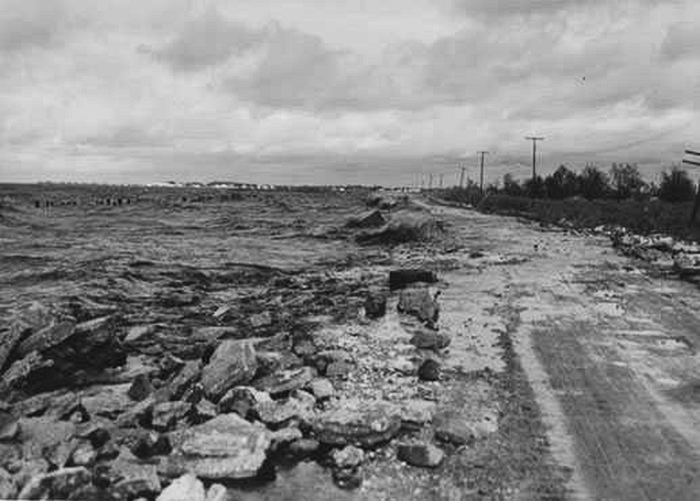
 September 4, 1972 -- Times-Picayune
September 4, 1972 -- Times-Picayune
 September 4, 1972 -- Times-Picayune
September 4, 1972 -- Times-Picayune September 2, 1972 -- Times-Picayune
September 2, 1972 -- Times-Picayune
 September 4, 1972 -- Times-Picayune
September 4, 1972 -- Times-Picayune
 September 4, 1972 -- Times-Picayune
September 4, 1972 -- Times-Picayune
 September 4, 1972 -- Times-Picayune
September 4, 1972 -- Times-Picayune

